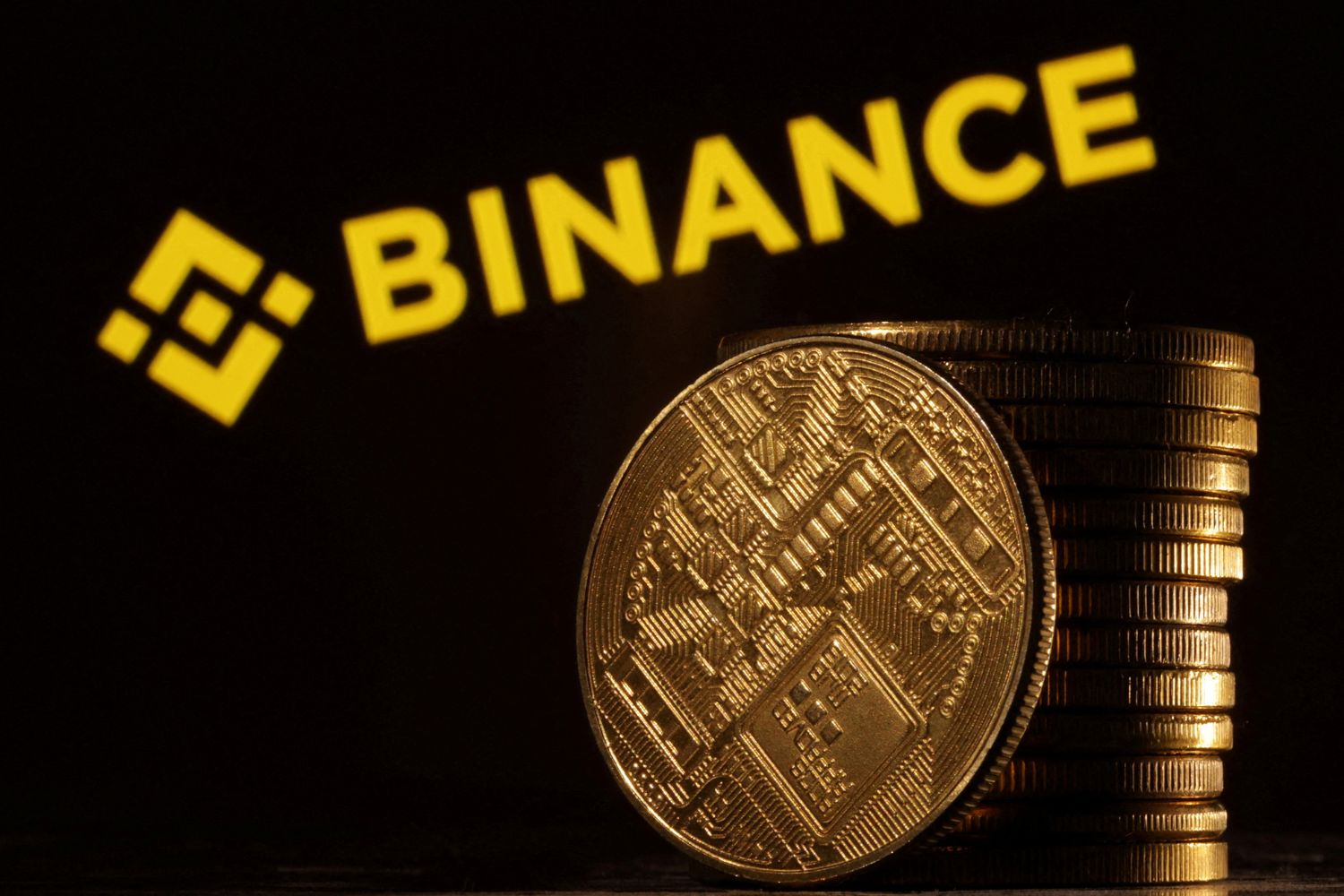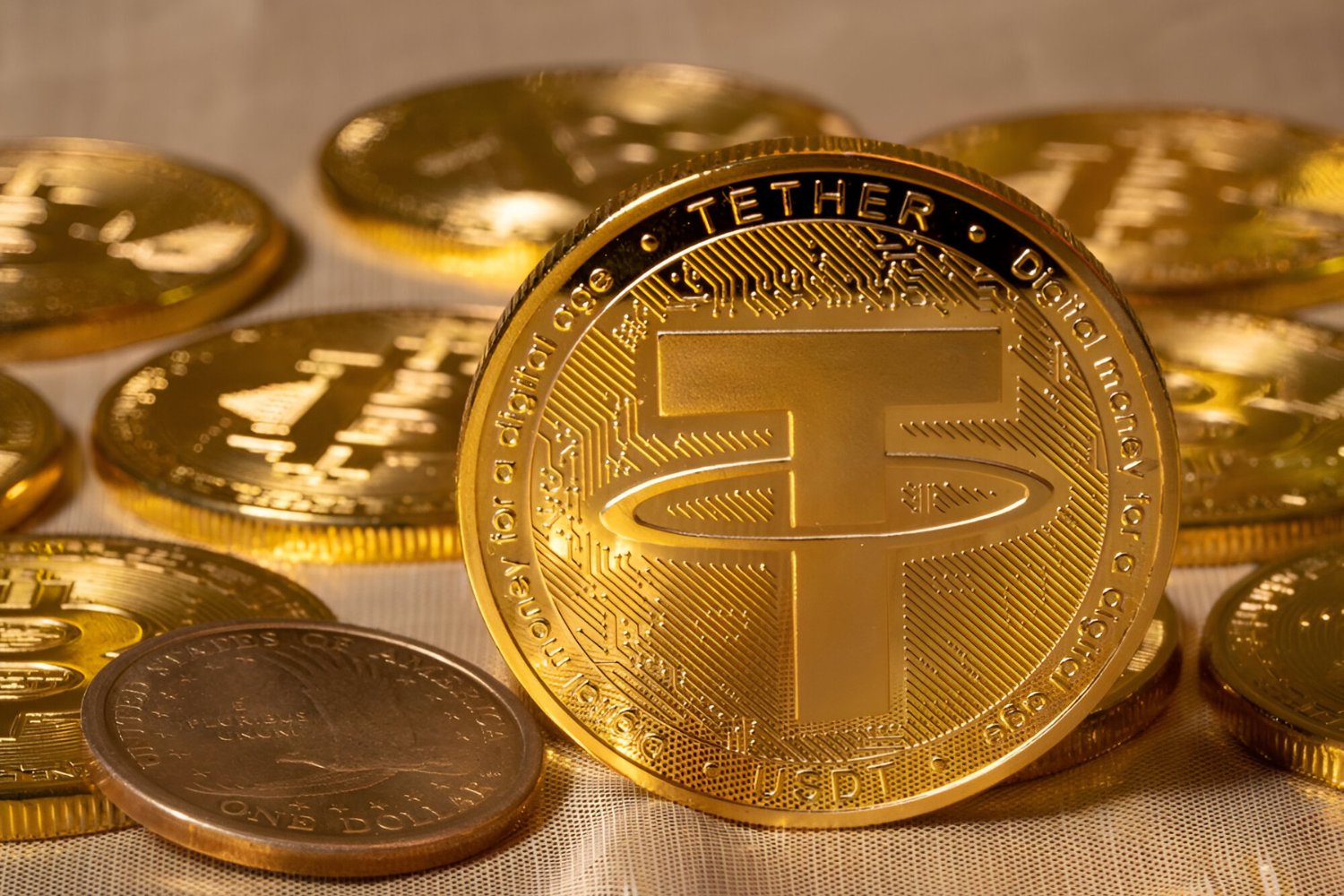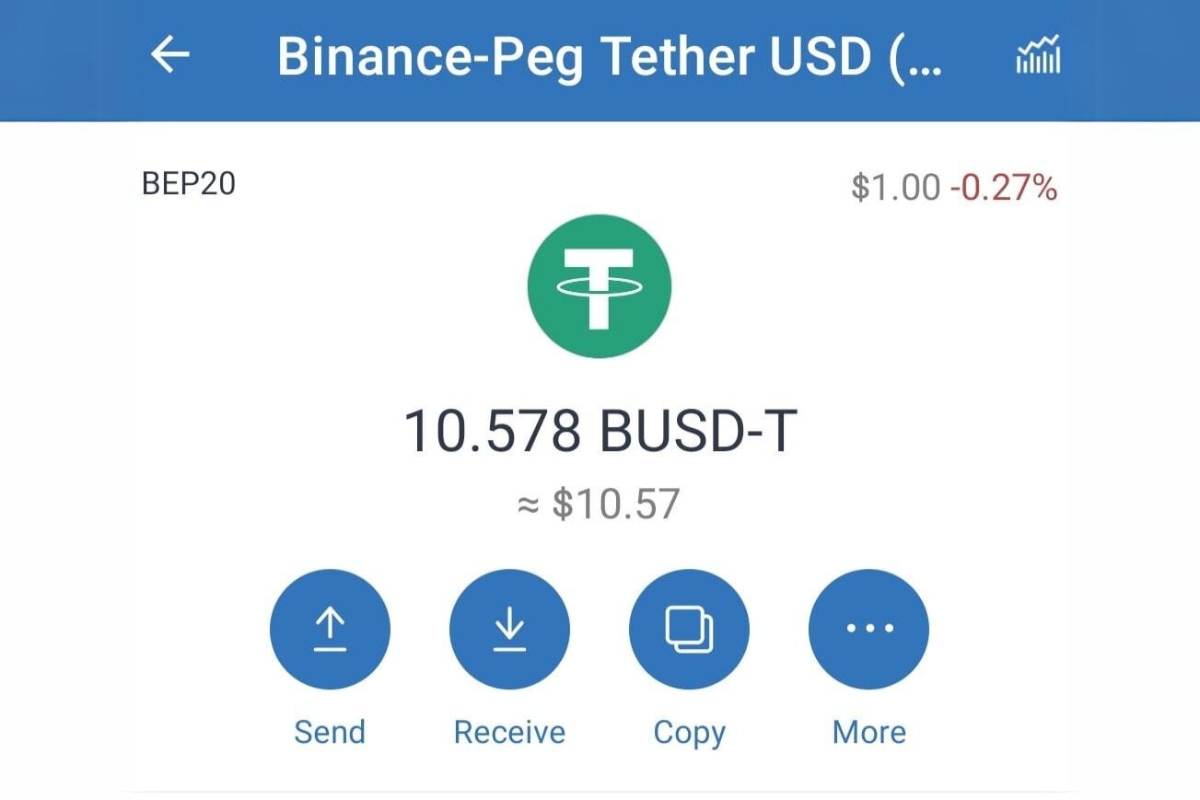Introduction
Welcome to this guide on how to get rid of Tether on Binance. If you are new to the world of cryptocurrencies and trading, you may be wondering what exactly Tether is and why someone would want to get rid of it on the Binance platform. Well, you’re in the right place to find out!
Tether (USDT) is a popular stablecoin that aims to provide stability to cryptocurrency trading by pegging its value to the U.S. dollar. It has become one of the most widely used stablecoins in the crypto market due to its relatively low volatility.
However, there may come a time when you no longer want to hold Tether on Binance and wish to convert it back into fiat currency or another cryptocurrency. It could be for various reasons, such as diversifying your portfolio, taking profits, or simply wanting to try out different digital assets.
This guide will walk you through the step-by-step process of getting rid of Tether on Binance. We will cover everything from verifying your Binance account to withdrawing your funds, ensuring a smooth and hassle-free experience.
Before we dive into the steps, please note that it is crucial to exercise caution and double-check the details during the process. Cryptocurrency transactions are irreversible, and any mistakes could result in permanent loss of funds.
So, if you’re ready to learn how to get rid of Tether on Binance, let’s jump right into the next section and get started with verifying your Binance account.
What is Tether on Binance?
Tether (USDT) is a type of cryptocurrency known as a stablecoin. Unlike most other cryptocurrencies, whose values can be highly volatile, stablecoins are designed to maintain a stable value. Tether, in particular, is designed to have a value that is pegged to the U.S. dollar at a 1:1 ratio.
On Binance, one of the world’s largest cryptocurrency exchanges, Tether serves as a popular trading pair against many other cryptocurrencies. It provides traders with a quick and easy way to move their assets into a stable form, protecting them from sudden market fluctuations.
By utilizing Tether on Binance, traders can effectively “tether” their assets to a stable value, allowing for greater stability in their trading strategies. This is particularly useful during times of high market volatility or uncertainty.
Tether on Binance is commonly used for purposes such as hedging risk, maintaining a stable value when not actively trading, or facilitating liquidity across different trading pairs. The availability of Tether as a trading pair allows traders to easily move in and out of positions without needing to convert their assets to fiat currency.
While Tether has gained significant popularity, it is essential to note that it has also faced some controversy and scrutiny. Critics have raised concerns about the transparency and auditability of Tether’s reserves. However, it remains widely used due to its convenience and widespread acceptance across cryptocurrency exchanges, including Binance.
Now that we have a basic understanding of what Tether is and its role on the Binance platform, let’s move on to explore why someone might want to get rid of Tether on Binance.
Why would you want to get rid of Tether on Binance?
While Tether offers stability and liquidity to traders, there are several reasons why you might want to get rid of Tether on Binance:
- Diversification: Holding only Tether limits your exposure to other cryptocurrencies and potential investment opportunities. By converting Tether to other cryptocurrencies, you can diversify your portfolio and spread your risk across different assets.
- Profit-taking: If you’ve experienced significant gains from your Tether holdings or a specific cryptocurrency pair, you may decide to convert your Tether into another cryptocurrency or fiat currency to secure your profits.
- Exploring other projects: The crypto market is dynamic, and new projects with promising technologies and potential investment opportunities constantly emerge. By getting rid of Tether, you can explore and invest in other cryptocurrencies that align with your investment strategy and goals.
- Reducing exposure to stablecoin risks: Despite its popularity, Tether is not entirely risk-free. Concerns about Tether’s reserves and regulatory compliance have led some investors to opt for other stablecoins or fiat currencies. By converting Tether to another stablecoin or fiat currency, you can reduce your exposure to any potential risks associated with Tether.
- Withdrawing to fiat currency: If you need to convert your cryptocurrency assets back into traditional fiat currency for personal expenses or for other investments, getting rid of Tether on Binance is necessary. This enables you to withdraw funds to your bank account or use them for day-to-day transactions.
It’s important to note that the decision to get rid of Tether on Binance is entirely subjective and depends on your individual investment goals, risk tolerance, and market outlook. By understanding the reasons why you might want to part ways with Tether, you can make informed decisions about your cryptocurrency holdings.
Now that we have explored the reasons behind getting rid of Tether on Binance, let’s proceed to the step-by-step process of converting and withdrawing your Tether funds.
Step 1: Verify your Binance account
Before you can get rid of Tether on Binance, you’ll need to ensure that your Binance account is verified. Verification is a necessary step to comply with regulatory requirements and ensure the security of your transactions.
To verify your Binance account, follow these steps:
- Log in or create an account: Visit the Binance website and log in to your account. If you don’t have an account, create one by providing the required information.
- Navigate to the account settings: Once you’re logged in, click on your profile icon at the top right corner of the screen. From the dropdown menu, select “Account” to access your account settings.
- Click on “Verify” or “Identity Verification”: In the account settings menu, you’ll find a section for verification. Click on “Verify” or “Identity Verification” to begin the process.
- Complete the verification process: Follow the instructions provided by Binance to complete the verification process. This may include providing personal information, such as your name, date of birth, address, and uploading a copy of your identification document (e.g., passport or driver’s license).
- Wait for verification: After submitting your verification documents, Binance will review your information. The verification process typically takes a short time, but it may vary depending on the volume of requests.
- Check your verification status: Once your verification is complete, you’ll receive a notification or see a change in your account settings indicating that your account is verified.
It’s important to note that some features and withdrawal limits may be restricted for unverified accounts. Verification allows you to enjoy higher withdrawal limits and access additional features on the Binance platform.
Now that your Binance account is verified, you’re ready to proceed to the next step: transferring your Tether to another cryptocurrency.
Step 2: Transfer your Tether to another cryptocurrency
Now that your Binance account is verified, you can proceed to transfer your Tether (USDT) to another cryptocurrency of your choice. This step allows you to diversify your holdings or explore different investment opportunities. Here’s how you can transfer your Tether on Binance:
- Log in to your Binance account: Visit the Binance website and log in to your verified account.
- Navigate to the “Funds” section: Once you’re logged in, click on “Wallet” at the top right corner of the screen, and select “Spot Wallet” from the dropdown menu.
- Find your Tether (USDT) balance: In the “Spot Wallet” section, find your Tether balance. If you don’t have any Tether yet, you’ll need to deposit it into your Binance account.
- Click on “Trade” next to Tether (USDT): Locate your Tether balance and click on the “Trade” button next to it.
- Select the trading pair: In the trading interface, select the cryptocurrency you want to transfer your Tether to. For example, if you want to convert Tether to Bitcoin, search for the BTC/USDT trading pair.
- Choose the trading type: You can choose between a “Market” order, which executes the trade immediately at the current market price, or a “Limit” order, which allows you to set a specific price for the trade.
- Enter the amount to transfer: Specify the amount of Tether you want to transfer to the chosen cryptocurrency. Ensure that you have enough balance to cover the transaction fees.
- Review and confirm the transaction: Double-check all the details, including the trading pair and the amount you’re transferring. Once you’re satisfied, click on “Buy” or “Sell” to execute the transfer.
- Monitor the transaction: After confirming the transfer, you can monitor the progress of the transaction in the “Order History” section. Once the transfer is complete, you’ll see the new cryptocurrency balance in your Binance account.
It’s important to note that the availability of trading pairs may vary, and the process may differ slightly based on the specific cryptocurrency you choose to transfer your Tether to. Ensure that you review all the details and fees associated with the transaction before proceeding.
Once you have successfully transferred your Tether to another cryptocurrency, you can proceed to the next step: converting your cryptocurrency to fiat currency or withdrawing your funds from Binance.
Step 3: Convert your cryptocurrency to fiat currency
After transferring your Tether to another cryptocurrency on Binance, you may decide to convert it to fiat currency. Converting your cryptocurrency to fiat currency allows you to withdraw your funds or use them for everyday expenses. Here’s how you can convert your cryptocurrency on Binance:
- Log in to your Binance account: Visit the Binance website and log in to your account.
- Navigate to the “Funds” section: Once you’re logged in, click on “Wallet” at the top right corner of the screen, and select “Spot Wallet” from the dropdown menu.
- Find your cryptocurrency balance: In the “Spot Wallet” section, locate the cryptocurrency you transferred from Tether. For example, if you converted Tether to Bitcoin, find your Bitcoin balance.
- Click on “Trade” next to the cryptocurrency: Once you’ve found your cryptocurrency balance, click on the “Trade” button next to it.
- Select the trading pair: In the trading interface, choose the trading pair that allows you to convert your cryptocurrency to your desired fiat currency. For example, if you want to convert Bitcoin to US dollars, search for the BTC/USD trading pair.
- Choose the trading type: You can select a “Market” order to execute the trade immediately at the current market price or a “Limit” order to set a specific price for the trade.
- Enter the amount to convert: Specify the amount of your cryptocurrency that you want to convert to fiat currency.
- Review and confirm the transaction: Double-check all the details, including the amount and trading pair. Once you’re satisfied, click on “Buy” or “Sell” to execute the conversion.
- Monitor the transaction: After confirming the conversion, you can monitor the progress of the transaction in the “Order History” section. Once the conversion is complete, you’ll see the equivalent value in fiat currency reflected in your Binance account.
It’s important to note that the availability of trading pairs for converting your cryptocurrency to fiat currency may vary depending on your location and Binance’s supported markets. Additionally, there may be transaction fees and minimum withdrawal limits associated with converting to fiat currency.
Now that you have successfully converted your cryptocurrency to fiat currency on Binance, you can proceed to the final step: withdrawing your funds from Binance.
Step 4: Withdraw your funds from Binance
Once you have converted your cryptocurrency to fiat currency on Binance, the final step is to withdraw your funds from the platform. This will allow you to transfer your funds to your bank account or another wallet of your choice. Here’s how you can withdraw your funds from Binance:
- Log in to your Binance account: Visit the Binance website and log in to your account.
- Navigate to the “Funds” section: Once you’re logged in, click on “Wallet” at the top right corner of the screen, and select “Spot Wallet” from the dropdown menu.
- Click on “Withdraw” next to the fiat currency: In the “Spot Wallet” section, locate the fiat currency balance you want to withdraw. Click on the “Withdraw” button next to it.
- Choose the withdrawal method: Binance offers various withdrawal methods, such as bank transfer, credit/debit card, or third-party payment processors. Select the method that suits your needs.
- Enter the withdrawal details: Provide the necessary withdrawal details, including the destination wallet address or bank account information. Ensure that you double-check the details to avoid any errors.
- Specify the withdrawal amount: Enter the amount you want to withdraw. Take note of the minimum withdrawal amount and any applicable withdrawal fees.
- Review and confirm the withdrawal: Double-check all the withdrawal details, including the amount, destination, and fees. Once you’re certain, click on “Confirm” to initiate the withdrawal.
- Monitor the withdrawal: After confirming the withdrawal, you can track the progress of the transaction in the “Withdrawal History” section. Binance will provide you with a transaction ID or withdrawal reference for further reference.
- Receive your funds: Depending on the selected withdrawal method and the processing time, you’ll receive your funds in your bank account or designated wallet. The time it takes for the funds to reflect can vary.
It’s crucial to note that withdrawal limits, processing times, and fees may vary depending on the withdrawal method and your location. Ensure that you review and understand the terms and conditions associated with the specific withdrawal method you choose.
With that, you have successfully withdrawn your funds from Binance. You can now enjoy your fiat currency or transfer it to other accounts or investments as desired.
Conclusion
Congratulations! You have successfully learned how to get rid of Tether on Binance. By following the step-by-step process outlined in this guide, you verified your Binance account, transferred your Tether to another cryptocurrency, converted it to fiat currency, and finally withdrew your funds from the platform.
Getting rid of Tether on Binance offers you the opportunity to diversify your holdings, secure profits, explore new investment opportunities, or convert your cryptocurrency to fiat currency for personal use. Keep in mind that the decision to get rid of Tether or any other cryptocurrency should align with your investment goals, risk tolerance, and market outlook.
Throughout the process, it’s crucial to pay attention to the details, double-check the information you provide, and be mindful of any applicable fees or withdrawal limits. Cryptocurrency transactions, once executed, are generally irreversible, so it’s essential to take precautionary measures and ensure the accuracy of your actions.
If you encounter any issues or have further questions about getting rid of Tether on Binance, you can refer to Binance’s support documentation or reach out to their customer service for assistance. They are readily available to help address any concerns you may have.
Now that you’ve successfully completed all the steps to get rid of Tether on Binance, you can make informed decisions about your cryptocurrency holdings, diversify your portfolio, and explore new opportunities in the ever-evolving world of digital assets.
Remember to stay updated with the latest cryptocurrency news and market trends to make informed investment decisions. Best of luck in your cryptocurrency journey!

























